Smtp Auth Shared Mailbox
Overview of SMTP Auth Shared Mailbox
SMTP Auth Shared Mailbox is an essential tool for businesses that require a shared mailbox with the ability to send emails using SMTP authentication. It allows multiple users to access and send emails from a shared mailbox, providing a centralized communication platform. SMTP Auth Shared Mailbox is commonly used in organizations where multiple employees need access to a single mailbox, such as customer support teams or project groups.
Benefits of Using SMTP Auth Shared Mailbox
There are several benefits to using SMTP Auth Shared Mailbox for your organization. Here are some key advantages:
1. Enhanced Collaboration: By having a shared mailbox, team members can collaborate more effectively by having access to the same emails and being able to respond on behalf of the shared mailbox. This ensures that clients receive timely responses and minimizes duplication of efforts.
2. Streamlined Communication: With SMTP Auth Shared Mailbox, all relevant team members have real-time access to incoming and outgoing emails. This eliminates the need for forwarding emails or cc’ing multiple people, leading to improved efficiency and clearer communication.
3. Professional Branding: By sending emails from a shared mailbox, team members can maintain consistent branding and professionalism. This is particularly important for customer support teams or departments that handle external communications.
4. Simplified Access Management: With shared mailboxes, it is easier to manage access permissions and add or remove team members. This ensures that the right people have access to the shared mailbox and reduces the risk of unauthorized access.
Setting up an SMTP Auth Shared Mailbox
Setting up an SMTP Auth Shared Mailbox requires configuring the SMTP authentication settings for your email provider. In this section, we will focus on setting up an SMTP Auth Shared Mailbox using Office 365 as an example.
Step-by-Step Guide to Configuring SMTP Authentication
To set up SMTP authentication for an Office 365 shared mailbox, follow these steps:
1. Log in to the Office 365 Admin Center and navigate to the Exchange Admin Center.
2. Go to the Recipients tab and select Shared.
3. Choose the desired shared mailbox and click Edit.
4. In the mailbox properties, go to the Mailbox features tab and locate the ‘SMTP Auth’ section.
5. Enable SMTP authentication by checking the box next to ‘Enable authentication.’
6. Save the changes and wait for the settings to propagate.
Choosing the Right SMTP Authentication Method
When configuring SMTP authentication for your shared mailbox, you can choose between different authentication methods. The most common methods include using a username and password, client certificates, or token-based authentication. The method you choose will depend on your organization’s security requirements and resources.
Common Issues with SMTP Auth Shared Mailboxes
While SMTP Auth Shared Mailboxes offer numerous benefits, they can occasionally encounter issues. Some common problems include:
1. Authentication failures: Incorrect configuration of SMTP authentication settings or incorrect login details can result in authentication failures when trying to send emails from a shared mailbox.
2. Permission conflicts: In some cases, permission conflicts can arise when different users have conflicting access rights to the shared mailbox. This can cause issues with sending emails or accessing certain features of the shared mailbox.
Troubleshooting SMTP Authentication Problems
To troubleshoot SMTP authentication problems with a shared mailbox, consider the following steps:
1. Double-check the SMTP authentication settings and ensure they are correctly configured.
2. Verify that the login credentials used for SMTP authentication are accurate and up to date.
3. Check for any permission conflicts or restrictions that may be preventing successful authentication.
Ensuring Security for SMTP Auth Shared Mailbox
To ensure the security of your SMTP Auth Shared Mailbox, consider the following best practices:
1. Use strong passwords: Ensure that all users have strong and unique passwords for their accounts. Regularly update passwords and implement multi-factor authentication for added security.
2. Regularly review access permissions: Review and update the access permissions of shared mailboxes to ensure that only authorized users have access.
Best Practices for Managing SMTP Auth Shared Mailbox
To effectively manage your SMTP Auth Shared Mailbox, consider the following best practices:
1. Clearly define roles and responsibilities: Assign specific roles and responsibilities to team members who have access to the shared mailbox to ensure efficient management and accountability.
2. Regularly monitor and archive emails: Set up processes to regularly monitor and archive emails to ensure that important messages are properly retained and easily accessible.
Alternatives to SMTP Auth Shared Mailboxes
While SMTP Auth Shared Mailbox is an effective solution for many businesses, there are alternative options available. Some alternatives include using group mailboxes, distribution lists, or collaboration tools with email integration. Depending on your organization’s specific requirements, one of these alternatives may better suit your needs.
In conclusion, SMTP Auth Shared Mailbox is a valuable tool for businesses that require a shared mailbox with the ability to send emails using SMTP authentication. By following the steps outlined in this article and implementing best practices, you can effectively set up and manage an SMTP Auth Shared Mailbox, enhancing collaboration, communication, and efficiency within your organization.
How To Enable Smtp Authentication In Microsoft 365 | Enable Smtp Submission In Office 365
Keywords searched by users: smtp auth shared mailbox smtp settings for office 365 shared mailbox, scan to email office 365 shared mailbox, Enable SMTP authentication Office 365, c# send email from shared mailbox, shared mailbox smtp, smtp authentication office 365 not working, enable smtp authentication exchange 2016, enable legacy smtp office 365
Categories: Top 39 Smtp Auth Shared Mailbox
See more here: nhanvietluanvan.com
Smtp Settings For Office 365 Shared Mailbox
Office 365 is a powerful suite of productivity tools that offers a wide range of features to streamline communication and collaboration within organizations. One of the essential features of Office 365 is its ability to create shared mailboxes, which can be accessed and managed by multiple users. However, in order to configure and use these shared mailboxes effectively, it is important to understand and configure the SMTP settings correctly. In this article, we will delve into the details of SMTP settings for Office 365 shared mailboxes and provide step-by-step instructions to set it up correctly.
What is SMTP?
SMTP stands for Simple Mail Transfer Protocol, which is a standard method used to send emails over the internet. It is a protocol that allows email clients to send messages to a mail server and for the server to forward those messages to the intended recipients. SMTP uses certain settings to connect to the email server and establish a secure and successful email delivery.
SMTP Settings for Office 365 Shared Mailbox:
When configuring SMTP settings for an Office 365 shared mailbox, the following information needs to be provided:
1. Server Address: The server address for Office 365 is smtp.office365.com.
2. Port Number: Office 365 supports two port numbers for SMTP – 25 and 587. Port 587 is recommended for non-encrypted and encrypted connections.
3. Encryption Method: For secure email delivery, it is important to enable encryption. Office 365 supports TLS (Transport Layer Security) encryption, which ensures that the communication between the email client and the server is secure.
4. Authentication: Office 365 requires authentication for SMTP connections. The shared mailbox credentials need to be provided to authenticate and send emails successfully.
Step-by-Step Guide to Configure SMTP Settings for Office 365 Shared Mailbox:
Follow these steps to configure the SMTP settings for Office 365 shared mailbox:
Step 1: Open the email client or application through which you want to send emails from the shared mailbox.
Step 2: Locate the SMTP settings in the email client’s configuration options. It is usually found under the ‘Account Settings’ or ‘Advanced Settings’ section.
Step 3: Enter the following information:
– Server Address: smtp.office365.com
– Port Number: 587
– Encryption Method: SSL/TLS
Step 4: Enable authentication and provide the shared mailbox credentials (username and password). Make sure to use the shared mailbox email address as the username.
Step 5: Save the settings and test the connection by sending a test email from the shared mailbox.
Step 6: If the test email is successfully delivered, your SMTP settings are configured correctly, and you can start using the shared mailbox for sending and receiving emails.
Common FAQs about SMTP Settings for Office 365 Shared Mailbox:
Q1: Can I use the same SMTP settings for all Office 365 shared mailboxes?
A1: Yes, the same SMTP settings can be used for all Office 365 shared mailboxes.
Q2: Can I use a custom domain with Office 365 shared mailbox SMTP settings?
A2: Yes, you can use a custom domain with Office 365 shared mailbox SMTP settings. However, you need to ensure that the DNS records for the custom domain are correctly set up to point to Office 365 servers.
Q3: Can I send emails from a shared mailbox using a mobile device?
A3: Yes, you can configure the SMTP settings for Office 365 shared mailbox on mobile devices as well. The steps may vary slightly depending on the email application you are using on your mobile device.
Q4: How can I troubleshoot issues with SMTP settings for Office 365 shared mailbox?
A4: If you are facing issues with SMTP settings, ensure that the server address, port number, encryption method, and authentication details are entered correctly. Also, check if the shared mailbox has the necessary permissions to send emails.
Q5: Can I use SMTP settings for a shared mailbox on multiple devices simultaneously?
A5: Yes, you can use SMTP settings for an Office 365 shared mailbox on multiple devices simultaneously. The shared mailbox can be accessed and utilized by multiple users across various devices.
In conclusion, configuring SMTP settings correctly is crucial for the efficient functioning of an Office 365 shared mailbox. By following the step-by-step guide provided in this article, you can seamlessly set up and use SMTP settings for your shared mailbox, ensuring secure and reliable email delivery. Remember to troubleshoot any issues that may arise and consult Office 365 support for further assistance if needed.
Scan To Email Office 365 Shared Mailbox
In the digital age, organizations across the globe are continuously seeking ways to streamline their processes and enhance productivity. One area where this can be achieved is in document management. With the growing emphasis on digitalization, scan to email has become a popular method to transform hard copies of files and send them electronically. Office 365, the comprehensive suite of productivity tools offered by Microsoft, provides a convenient and efficient way to integrate scan to email functionality.
Office 365 offers a shared mailbox feature that allows multiple users to access a common email account. This shared mailbox can serve as a central repository for incoming scanned documents, eliminating the need to distribute physical papers or forward individual email attachments. By leveraging this functionality, organizations can effectively manage their document workflow, simplify collaboration, and improve overall efficiency.
Setting up scan to email with Office 365 shared mailbox is a straightforward process. Firstly, you would need to configure your scanning device or software to use the SMTP (Simple Mail Transfer Protocol) settings provided by your Office 365 account. These settings determine the server and authentication details required to send emails through the shared mailbox. Once configured, the scanning device can scan physical documents and send them directly to the shared mailbox as email attachments.
This integration offers several advantages. Firstly, it eliminates the need for physical storage space required for traditional hard copies of documents. By digitizing and storing files electronically, organizations can save office space and reduce clutter. Additionally, it enables quick and easy retrieval of documents, as users can search and access files directly from their email client.
Furthermore, scan to email with Office 365 shared mailbox enhances collaboration within an organization. Multiple users can access the shared mailbox simultaneously, allowing for seamless document sharing and collaboration. This is particularly beneficial in scenarios where multiple team members need to review or work on the same document. Instead of manually distributing copies or waiting for email attachments, users can simply access the shared mailbox and retrieve the required document.
FAQs:
Q: Can I configure multiple scanning devices to send emails to the same shared mailbox?
A: Yes, Office 365 allows you to configure multiple scanning devices to send emails to a shared mailbox. Simply ensure that each device is using the correct SMTP settings provided by your Office 365 account.
Q: Can I set up automatic forwarding of scanned emails from the shared mailbox to specific recipients?
A: Yes, Office 365 offers email rules and forwarding options that can be configured for the shared mailbox. You can set up rules to automatically forward scanned emails to specific recipients based on various criteria such as sender, subject, or keywords.
Q: Are there any limitations to the size or number of attachments that can be sent through a shared mailbox?
A: Office 365 does have certain limitations on email attachments, such as a maximum size limit per message and total mailbox size limit. It is recommended to check the current limits set by your Office 365 plan to ensure compliance.
Q: Can I enable notifications or alerts for incoming scanned emails in the shared mailbox?
A: Yes, Office 365 allows you to set up email alerts or notifications for incoming messages in the shared mailbox. Users can receive notifications on their desktop, mobile devices, or via email to stay up-to-date with incoming scanned documents.
In conclusion, scan to email functionality coupled with Office 365 shared mailbox offers a smart and efficient way to manage document workflow in organizations. By leveraging this integration, businesses can streamline processes, enhance collaboration, and reduce dependency on physical paperwork. Office 365’s robust features and flexibility make it an ideal platform for implementing scan to email functionality, leading to increased productivity and improved overall efficiency.
Enable Smtp Authentication Office 365
In today’s digital era, email has become a vital communication tool for businesses. However, the increasing number of cyber threats and malicious activities have made it imperative for organizations to prioritize the security and reliability of their email systems. One effective way to achieve this is by enabling Simple Mail Transfer Protocol (SMTP) authentication in Office 365. In this article, we will explore the significance of SMTP authentication and provide a comprehensive guide on how to enable it in Office 365. Additionally, we will address frequently asked questions (FAQs) to ensure a comprehensive understanding of the topic.
What is SMTP authentication, and why is it important?
SMTP authentication is a mechanism that ensures the legitimacy of email senders and prevents unauthorized individuals from utilizing an SMTP server to send spam or malicious emails. It requires the sender to provide valid login credentials before sending an email, thereby enhancing the security and reliability of outgoing email messages.
Enabling SMTP authentication in Office 365 is crucial for various reasons. Firstly, it helps in preventing unauthorized use of the organization’s email server. By requiring senders to authenticate themselves, it becomes significantly harder for spammers to exploit the server to send unsolicited emails. Moreover, enabling SMTP authentication can also minimize the chances of email spoofing, where someone impersonates a legitimate sender.
Another significant reason for enabling SMTP authentication is the improvement in email deliverability. Some email service providers and recipients’ servers consider emails without SMTP authentication as suspicious, increasing the likelihood of them being marked as spam or being blocked altogether. By enabling SMTP authentication, organizations can ensure that their legitimate emails reach the recipients’ inboxes with a higher deliverability rate.
How to enable SMTP authentication in Office 365?
Enabling SMTP authentication in Office 365 is a straightforward process. Here’s a step-by-step guide to help you get started:
Step 1: Sign in to the Office 365 admin center using your administrator credentials.
Step 2: Navigate to the Exchange admin center.
Step 3: In the Exchange admin center, go to the “mail flow” section and select “connectors.”
Step 4: Click on the “+” (plus) icon to add a new connector.
Step 5: In the “from” section, select “Office 365.”
Step 6: In the “to” section, choose “your organization’s email server.”
Step 7: Select the appropriate options based on your organization’s requirements and click “Next.”
Step 8: On the “Authentication” page, select “Basic Authentication.”
Step 9: Enter the username and password for your organization’s email server.
Step 10: Complete the connector creation process by following the prompts and clicking “Save” or “Finish.”
Upon successful configuration, SMTP authentication will be enabled for your Office 365 tenant. It is recommended to test the configuration thoroughly to ensure all outgoing emails are authenticated correctly before putting it into action.
FAQs:
Q1: What type of email servers can be used with SMTP authentication in Office 365?
A1: Office 365 supports SMTP authentication with most email servers, including but not limited to Exchange Server, Gmail, Yahoo Mail, and other popular email service providers.
Q2: Is enabling SMTP authentication mandatory in Office 365?
A2: While SMTP authentication is not mandatory, it is highly recommended for enhanced security and improved email deliverability.
Q3: Can I enable SMTP authentication for incoming email as well?
A3: SMTP authentication primarily focuses on authenticating outgoing emails from your organization’s email server. However, you can implement additional measures like DKIM (DomainKeys Identified Mail) and SPF (Sender Policy Framework) for incoming email authentication.
Q4: Are there any potential issues or complications with enabling SMTP authentication in Office 365?
A4: Enabling SMTP authentication should generally not cause any issues. However, it is advisable to test the configuration thoroughly and closely monitor email deliverability post-implementation to identify any potential complications or conflicts with existing setups.
Q5: Can SMTP authentication help protect against email phishing attacks?
A5: While SMTP authentication enhances the security of outgoing emails, it does not provide comprehensive protection against email phishing attacks. Organizations should implement additional security measures like user awareness training, email filtering, and advanced threat protection solutions to combat phishing attacks effectively.
Conclusion:
Enabling SMTP authentication in Office 365 is a vital step in fortifying your organization’s email communication. By verifying the credentials of email senders, SMTP authentication enhances security by preventing unauthorized use of the server and minimizing email spoofing. It also improves email deliverability, ensuring that legitimate emails reach the intended recipients’ inboxes. By following the step-by-step guide provided and considering the FAQs, organizations can enable SMTP authentication in Office 365 with ease, bolstering their email system’s security and reliability.
Images related to the topic smtp auth shared mailbox

Found 33 images related to smtp auth shared mailbox theme




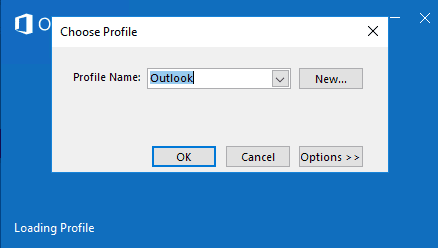














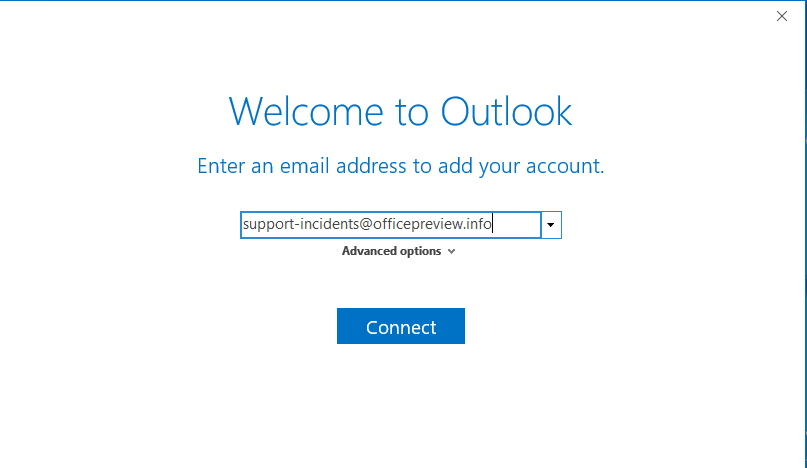





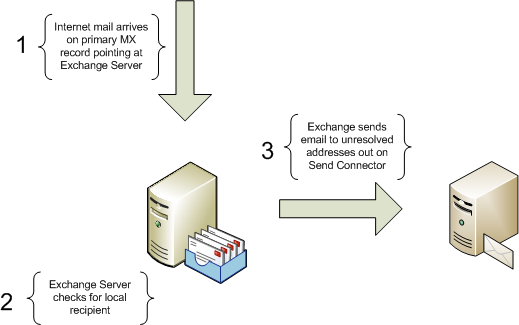

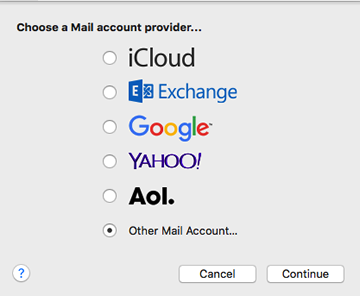



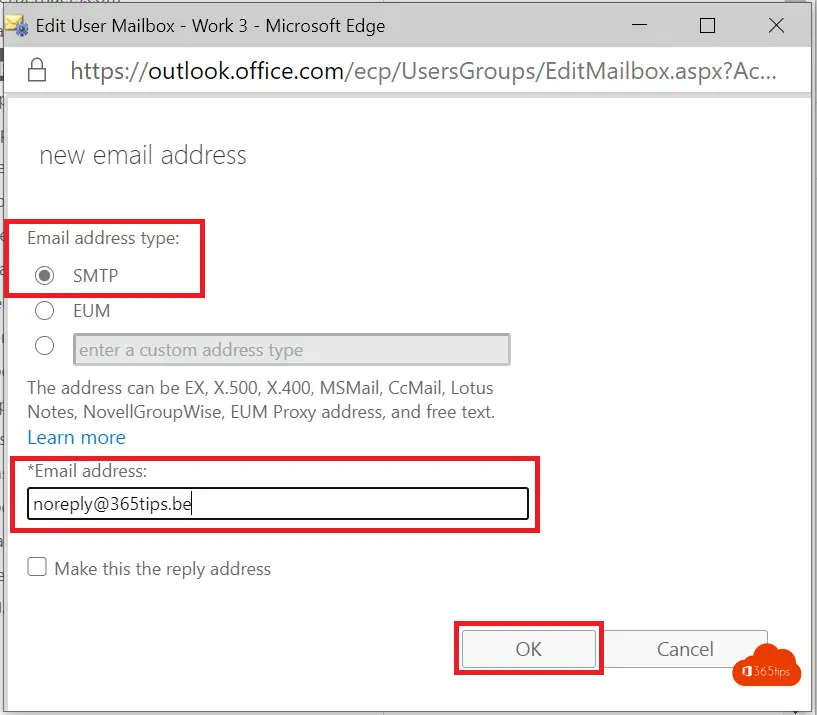


Article link: smtp auth shared mailbox.
Learn more about the topic smtp auth shared mailbox.
- Can Office365 shared mailbox use SMTP? – Stack Overflow
- Connecting Office 365 shared mailbox as outgoing email …
- Office365 SMTP Send Emails as Shared Mailbox via … – Kavoir
- Enable or disable authenticated client SMTP submission …
- How are you handling generic SMTP Auth for sending … – Reddit
- Exchange Online (Office365) custom SMTP authentication …
See more: https://nhanvietluanvan.com/luat-hoc/